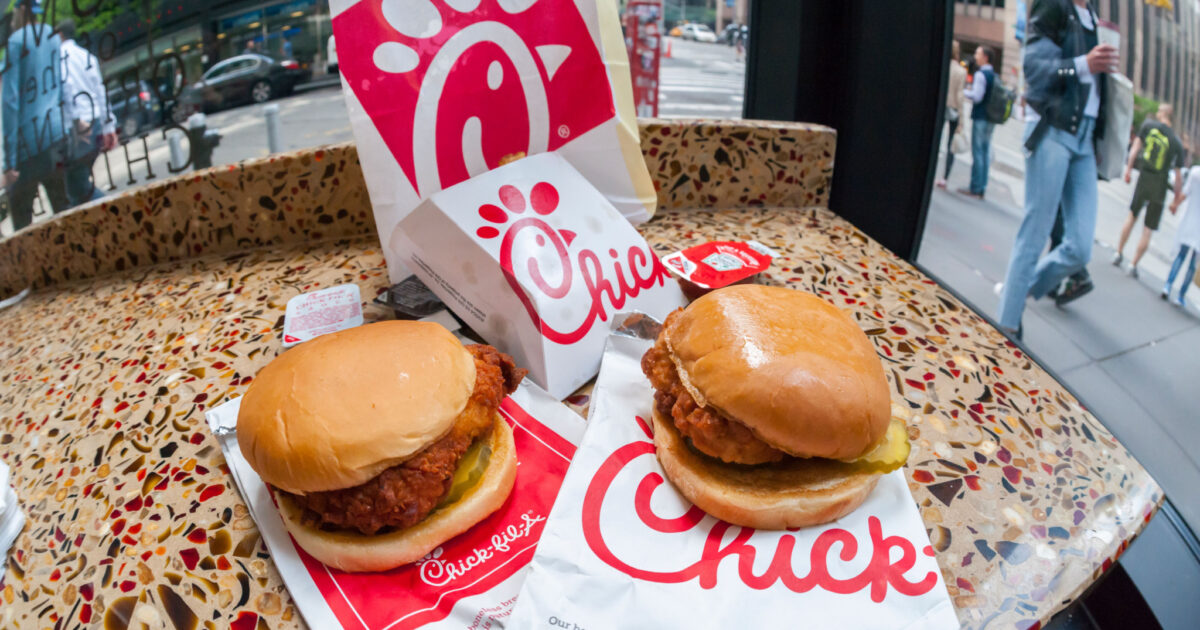Are chain stores and chain restaurants wrecking the world and turning our colorful, quirky, diverse world into a uniformly bland, corporatized dystopia, where every place looks like every other place, leaving every place with no sense of place? Hardly. More chains might mean Minneapolis, Montgomery, Montreal, and Milan all resemble one another, but they resemble one another because they offer ever-expanding arrays of options for people looking to feed, clothe, entertain, and express themselves. They make us richer financially and culturally. First, they make our dollars go further. Second, they free up time and money for other pursuits. Is it so bad that chains make places look alike?
I don’t think so, at least to the extent that places start looking alike in their abundance of options. No visit to Canada is complete without a stop at Tim Hortons. Not content to simply be the iconic coffee and donut brand of the True North strong and free, Tim Hortons is expanding its footprint south of the border, beyond the northeast and parts of the midwest with “priority new markets,” including California, Texas, Illinois, and Florida. Would it be such a bad thing if people in Ontario, California could get coffee from Tim Horton’s as easily as people in London, Ontario? Or if people in London, Ontario could get In-N-Out Burger as easily as those in Ontario, California? If both chains expanded to London, England, and made money doing it, their profits would indicate they are making the world a better place.
In any case, it’s not for cultural and culinary critics to decide. The free market is a continuous real-time election, where every dollar at every moment is a vote on what to do. Entrepreneurs and managers are subject to a perpetual referendum. The dollars I’m not spending right now are votes for more goods and services later. The dollars we spent on groceries today are votes for the things we keep in our fridge and pantry. The dollars we spend at Chick-fil-A when we’re traveling are votes for chicken sandwiches, and the dollars we spend at fancy restaurants are votes for haute cuisine. When have the purveyors of these goods served consumers wisely and well? The proof is in the profits.
What if people make the wrong choices? First, “wrong choices” are in the eye of the beholder. “A choice I wouldn’t make” is not a “wrong choice.” There are exceptions. Responsible parents don’t let their kids eat yellow snow or play in the street during rush hour. But those are exceptions, and deciding to go to faceless, corporate McDonald’s instead of locally owned McDowell’s is hardly comparable to playing in traffic. Second, grown men and women are not pieces on a chessboard we can arrange as we see fit. If you’re free to choose only what professional busybodies know you should want, you’re not free.
Recently, I read that a Florida barbecue chain is looking to expand into Alabama. I confess I was frustrated. I love barbecue, but I would rather have more places to get Vietnamese noodles, Chinese dumplings, Korean fried chicken, and Ethiopian anything than another barbecue place. That’s not my decision to make, however. The “right” number of barbecue restaurants is like the right number of varieties of underarm deodorant. If there’s still money to be made, consumers are voting for more, and it is not my prerogative, nor yours, or Bernie Sanders’, or anyone else’s to suppress those votes.
Maybe we’re not being honest with ourselves. I attended a talk by Virginia Postrel based on her book The Substance of Style in graduate school. If I remember correctly, she said that when local officials and leaders turn their noses up at Starbucks and describe what they want in a local coffee shop, from the aesthetic to the ambiance to the variety, they describe Starbucks. In short, they want the Starbucks experience but not the Starbucks name.
Of course, intervention distorts retail markets. Local officials devote substantial time and energy (and dole out lots of goodies) to land “whales” like Walmart, Target, and other Big Box retailers that promise tantalizing tax revenue. Chains can take advantage of economies of scale that come with having executives and entire departments dedicated to regulatory compliance. Saying “stop doing this,” is like telling a lifelong heroin addict to “just say no,” but at least we can recognize the problem at its source. If we want more local flavor, getting governments out of entrepreneurs’ way is much better than banning chains.
People enjoy quirky, unique, and local places. I know I do. They also enjoy reliable, consistent, and predictable places, which is why chains succeed. As chains expand to new areas, those areas start to look alike. But they’re more alike in their diverse options for reliable, consistent, and predictable cuisine, clothing, car care, and other goods and services. If Bonchon, In-N-Out Burger, and Tim Hortons make their way to my neighborhood, I don’t think I’ll shed any tears, but if I do, they’ll be tears of joy at my new opportunities to get food and coffee I previously wouldn’t have been able to get without getting on a plane.








































